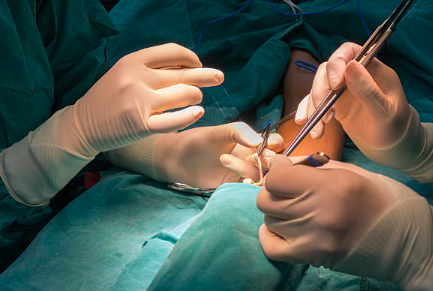The Hidden Artistry: Unveiling the Importance of Suturing in Wound Healing

Beneath the surface of sterile gloves and the array of medical instruments, hidden artistry resides within the realm of medicine—a craft that is integral to the process of wound healing: suturing. Suturing extends beyond its functional purpose of closing wounds; it represents an intricate skill that holds power to profoundly influence the outcome of healing, patient comfort, and even the aesthetics of the final result. In this blog post, we embark on an exploration into the captivating realm of suturing, where we unveil its hidden artistry and shed light on its profound significance in the intricate dance of wound healing.
The Dance of Healing: Sutures as Partners in the Process
Wound healing is a complex choreography that involves numerous cellular and biochemical processes. Sutures play a vital role as partners in this dance, facilitating the healing journey. By meticulously bringing together the edges of a wound, sutures create an environment conducive to cellular regeneration, enabling the body’s innate healing mechanisms to work their magic. The artistry of suturing lies in understanding the nuances of wound closure, ensuring that each step in the dance is executed with precision and care.
Restoring the Canvas: Sutures as Artists of Tissue Alignment
Just as an artist skillfully aligns the elements of a painting, sutures are the artists of tissue alignment. The precise placement of sutures ensures that the tissues are brought together in proper anatomical alignment, promoting optimal healing. This artistry of alignment is particularly crucial in complex wounds or surgical incisions where layers of tissues need to be realigned for optimal functional and aesthetic results. Sutures, in the hands of skilled practitioners, have the power to restore the canvas of the body, allowing it to heal harmoniously.
The Aesthetics of Healing: Sutures as Sculptors of Scars
Beyond their functional role, sutures can shape the aesthetics of healing. Like sculptors, healthcare professionals can mold the outcome of scars by employing various suturing techniques. The precise placement, tension, and technique during suturing can minimize scarring, ensuring that the healed wound blends seamlessly with the surrounding tissue. This hidden artistry of suturing not only contributes to patient satisfaction but also helps individuals regain their confidence as they embark on the journey of recovery.
An Orchestra of Closure: Sutures as Conductors of Wound Protection
Sutures act as conductors in the symphony of wound closure, orchestrating the optimal protection of the healing site. By bringing the wound edges together, sutures create a protective barrier against external contaminants, reducing the risk of infection. Their careful placement and tension distribution ensure that the wound remains secure and shielded during the healing process. The artistry lies in selecting the appropriate suturing technique and materials that best suit each unique wound, allowing for the harmonious symphony of wound protection.
Empowering Patient Recovery: Sutures as Allies of Comfort and Confidence
The artistry of suturing goes beyond the physical aspects of wound healing; it extends to the emotional well-being of patients. Precise suturing techniques minimize tension, reduce discomfort, and promote faster recovery. Patients who undergo well-executed suturing experience enhanced comfort during the healing process, which contributes to their overall well-being and confidence in the healthcare team’s abilities. Sutures become allies in the patient’s journey, providing support and assurance that their healing is in expert hands.
Conclusion
Suturing is an art form hidden within the realm of medicine, with its impact reaching far beyond the closure of wounds. The artistry lies in understanding the intricate dance of wound healing, aligning tissues with precision, shaping the aesthetics of scars, protecting the healing site, and empowering patients on their journey to recovery. By recognizing the hidden artistry of suturing,
